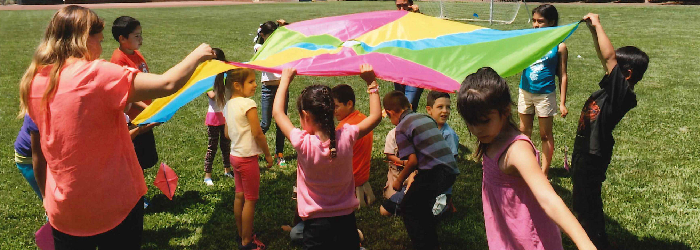
The afterschool snack component of the National School Lunch Program fills the afternoon hunger gap for school children. State agencies operate the snack service through agreements with local school food authorities (SFAs). SFAs are ultimately responsible for the administration of the snack service.
The NSLP Afterschool Snack Service offers cash reimbursement to help SFAs provide a nutritional boost to children enrolled in afterschool activities. Participating SFAs receive cash subsidies from the USDA for each reimbursable snack they serve (up to one reimbursement per participant per day). In return, they must serve snacks that meet federal requirements and must offer free or reduced price snacks to eligible children.
In order for the afterschool care program to be eligible, is must provide organized, regularly scheduled activities in a structured and supervised environment, including an educational or enrichment activity. Examples of eligible activities include homework assistance, tutoring, supervised “drop-in” athletic programs, extended day programs, drama activities, and arts and crafts programs. Organized interscholastic programs or community-level competitive sports are not eligible to participate.
Programs for Out-of-School-Time Providers
| CACFP At-Risk Afterschool Component | CACFP Outside- School-Hours Care Component | Afterschool Care Snack Service through the NSLP | Summer Food Service Program | |
| Program/Site Eligibility | At-risk afterschool care programs must:
| Outside-school-hours care programs must:
| NSLP afterschool care programs must:
| SFSP sites are eligible as Open, Enrolled, or Camps:
|
| Eligible Children | Children age 18 or under (at start of school year). | Children age 12 or younger. | Children age 18 or under (at start of school year). | Children age 18 and under; and young adults with disabilities enrolled in educational programs. |
| Eligible Meals and/or Snacks Per Day | Up to 1 snack and 1 meal per child. | Up to 2 meals and 1 snack per child. | 1 snack when served on regular school days only (afterschool programs operating during weekends or school breaks are not eligible to receive reimbursements through this program). | Generally up to 2 meals or 1 meal and 1 snack per child, with some exceptions depending on site type. |
| How Reimbursement is Provided | Program providers receive the “free” rate reimbursement for every meal or snack served to participating children. All snacks and meals must be provided free to every child. | Program providers receive the “free,” “reduced-price,” or “paid” rate for each meal or snack served to participating children depending on each child’s individual income. | Program providers receive the “free” rate for all snacks served in school attendance areas where at least 50% of enrolled children are eligible for free or reduced-price meals. Programs not located in eligible areas receive the “free,” “reduced-price,” or “paid” rate depending on each child’s family income. | Reimbursement varies depending on open, enrolled, or camp site designations. |

